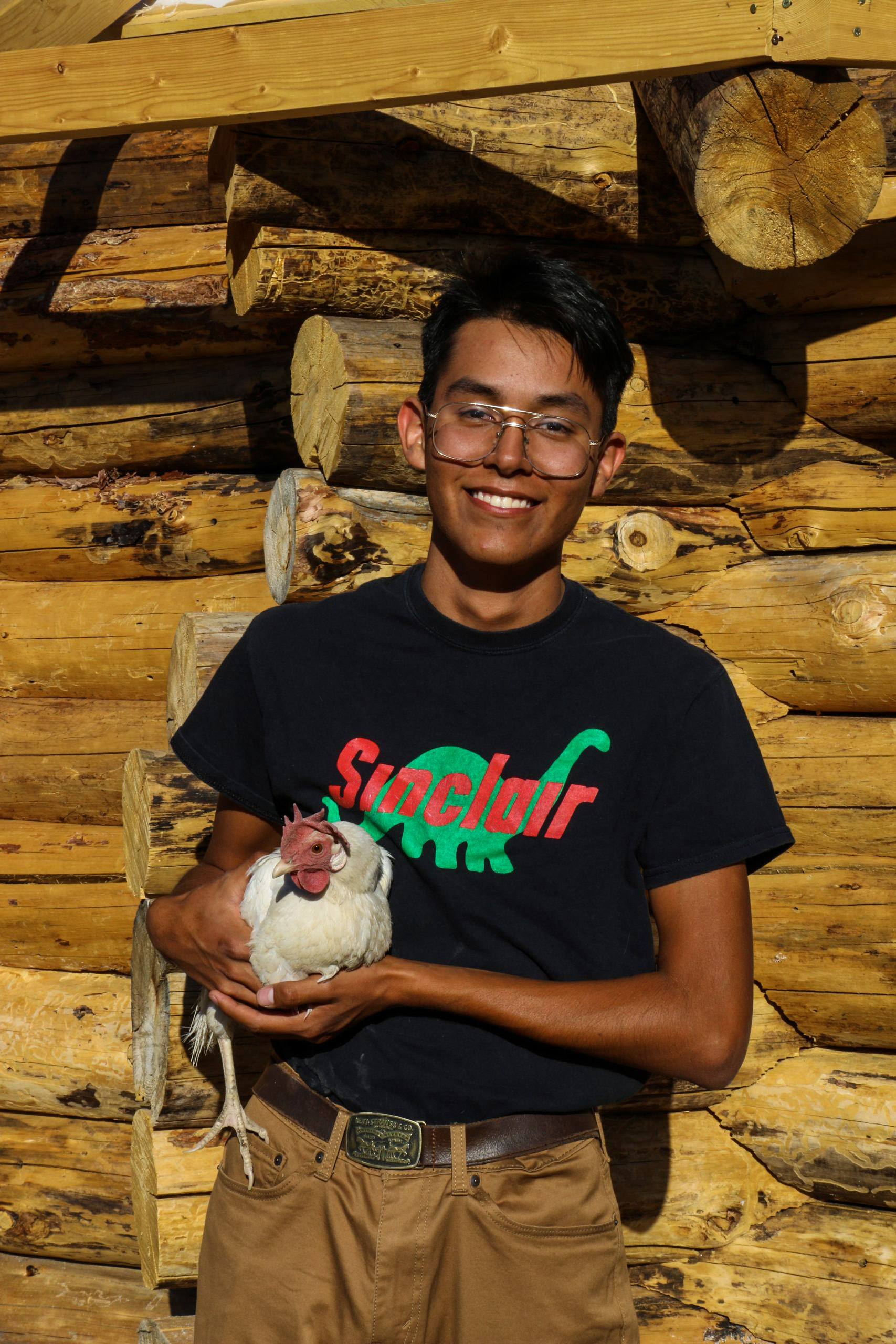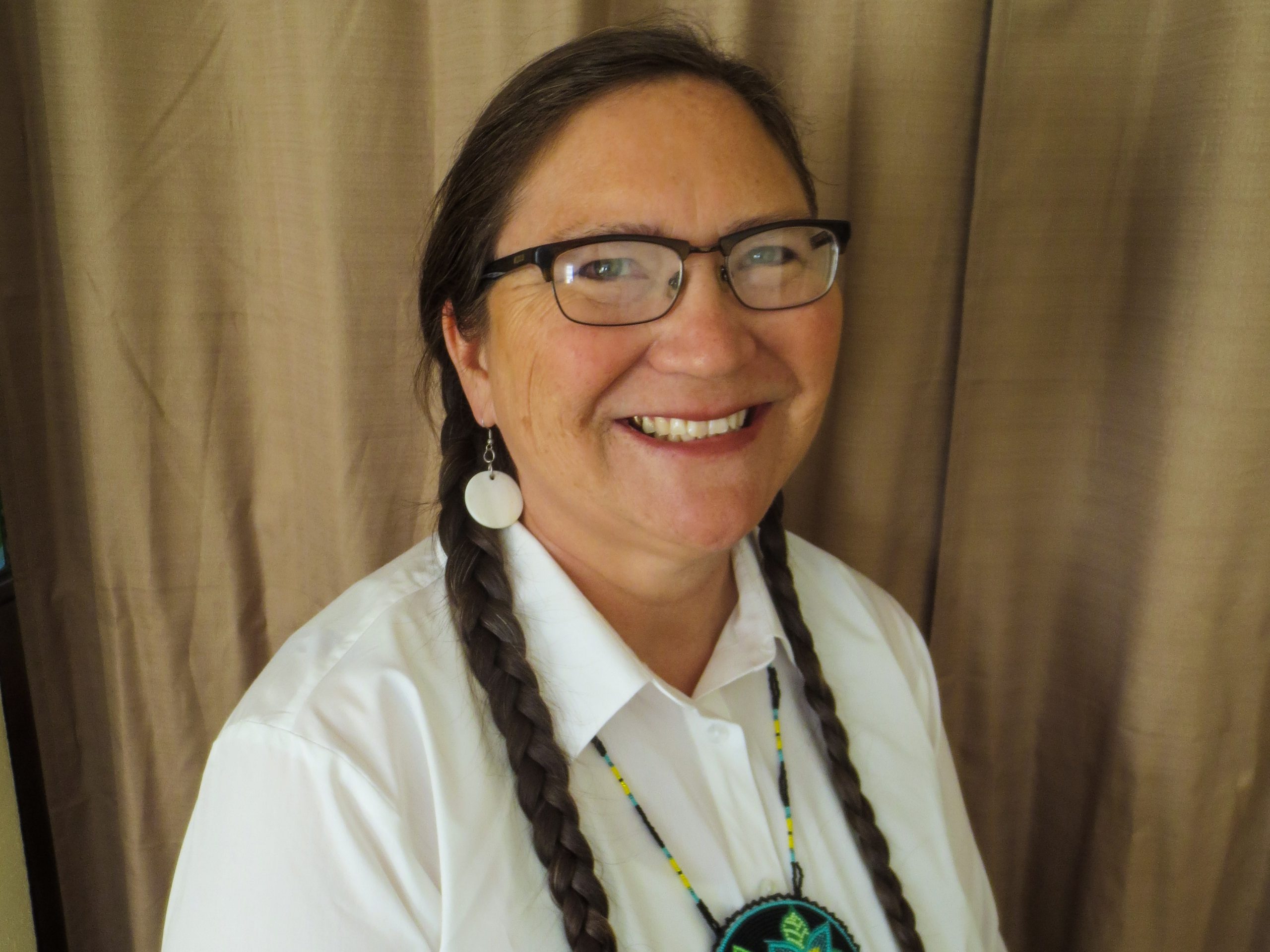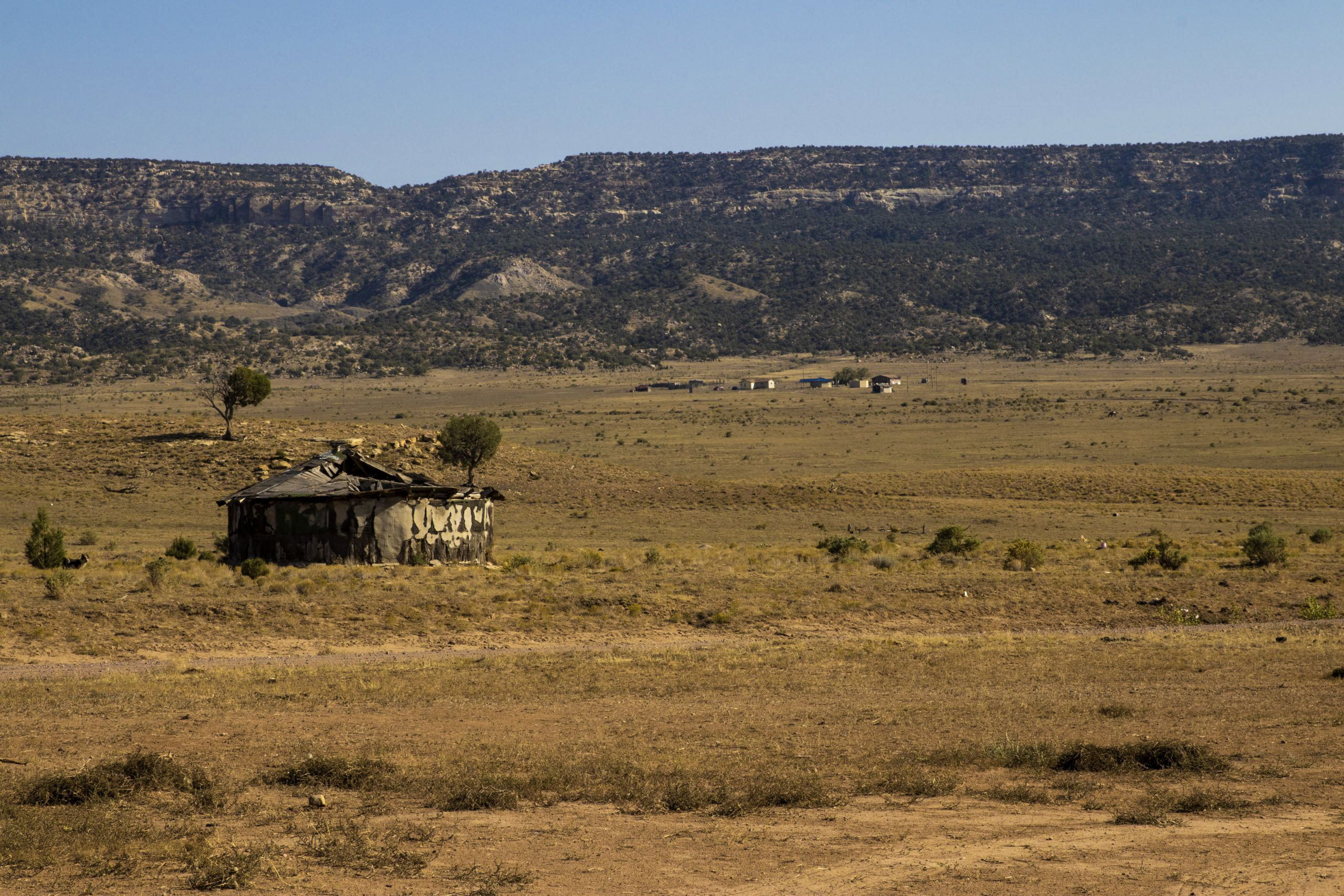Indianz.Com > News > Cronkite News: COVID-19 puts focus on healing and medicine on Navajo Nation
Pandemic shines light on complex coexistence of modern times, traditional ways on Navajo Nation
Wednesday, November 11, 2020
Cronkite News
PHOENIX – The most recent album from Hataalii, a Navajo Nation indie-rock artist, closes with a pair of instrumental tracks called “Rain.”
The songs, the artist said, are inspired by the relief that rains bring in hot summer months and the idea that all struggles subside with time. The message connects to something his grandmother shared recently: a supernatural story from Navajo tradition in which mysterious tall figures from another world promise to come to humanity’s aid in a time of need.
“You should be careful, but you shouldn’t fear it – because it’ll work itself out,” he recalls her saying, as she connected the legend to the current COVID-19 pandemic.
Hataalii is the work of Hataaliinez Wheeler, 17, of Window Rock. His stage name, and first name, derive from the Navajo word meaning “to sing” or “to chant.”
Hataalii also refers to the medicine men who for centuries have used songs, herbs and sacred ceremonies to treat physical or emotional ailments of the Navajo people.

Nez said the funding unfairly singled out leaders of a certain spiritual belief. “Not just the medicine man association, or the Hataalii Association, but all faith organizations should be able to get some relief,” Nez told Cronkite News. “Because even the (Christian) pastors went through some hardships.” A counterproposal later approved provides $2 million to be divided among the Diné Hataałi Association, Diné Medicine Men Association and the Native American Church, which melds traditional practices and Christianity. Michelle Kahn-John, a professor of nursing at the University of Arizona and secretary of the Diné Hataalii Association, said the group’s portion was $600,000.“The Diné Hataałii Association are in reality, the first responders and essential, front line public health workers”: Navajo healers are going public after request for small share of #CARESAct funds was vetoed. #Coronavirus #COVID19 #CoronavirusReliefFund https://t.co/SoNIGjL2Di
— indianz.com (@indianz) July 14, 2020
The squabble nonetheless left some feeling slighted. Franklin Sage, director of the Diné Policy Institute at Diné College in Tsaile, said some tribal government leaders “value the Western paradigm or the Western knowledge – Western medicine – more than their own traditional healers and practitioners and our own traditional way of life.” “I think some people are accepting of both Christianity and tradition,” he said. “And then some people are just totally one-sided.”79 new cases, 7,802 recoveries, and one more death related to COVID-19
— Jonathan Nez (@NezForAZ) November 11, 2020
For COVID-19 resources, visit the Navajo Department of Health's COVID-19 website: https://t.co/sNcc076Tdm. For COVID-19 related questions and information, call (928) 871-7014. pic.twitter.com/tR4AKbYuNx
Fighting COVID-19 on the front lines
Traditional healers, through ceremonies that can involve crystal, star and feather gazing, connect “with the natural world or the natural order or the natural universe that surrounds them,” said Travis Teller, a medicine man who works with the Diné Policy Institute.
Such rituals allow hataaliis to determine what’s ailing an individual – “mentally, emotionally, spiritually, physically, psychologically,” Teller said.
Then they guide people through healing ceremonies, which may involve successive nights of singing, days of physical cleansing or herbal treatments with medicinal plants. For example, sage leaves often are used for cold or sinus problems, while cedar boiled into tea works for stomachaches and other intestinal issues.
“First and foremost, hataaliis are spiritual leaders,” Teller said. “A lot of people on the reservation rely on them for guidance, leadership.”


Her advice on how to best boost the immune system to stave off a bad case of the virus that causes COVID-19 is familiar: get eight hours of sleep, eat healthful foods and exercise daily. Herbs work best when you’re already doing all the basic stuff, LaPier said. Jeffrey Langland, an assistant research professor at Arizona State University’s Biodesign Center for Immunotherapy, Vaccines and Virotherapy, is studying whether herbal treatments could help fight COVID-19. Through laboratory testing, he and his colleagues have identified about half a dozen herbs that are effective at killing the virus, he said. Once they’ve landed on the most potent combination, they hope to run clinical trials and work with a private company to bring a formulation to market. Most of the herbs being tested come from Chinese medicine, but Langland said he would like to establish partnerships with Native American practitioners so he can scientifically test their herbal treatments and get them to more people. “That information’s got to get to the public before it’s lost,” he said. On the Blackfeet Indian Reservation, LaPier said there isn’t necessarily great tension between traditional and Western practices, though many people’s first inclination is to see a Western doctor – a shift she says threatens traditional ways. “That is something that has happened over time due to colonization, due to the acculturation in our communities,” she said. “It’s something that our younger people need to solve.”Misrepresenting traditional knowledge during COVID-19 is dangerous https://t.co/B8Swk4Iata via @highcountrynews
— Roz La Pier (@RozLaPier) March 23, 2020

‘It’s definitely kind of fading’
Hataaliinez Wheeler is one young person interested in preserving traditional Navajo practices, especially those of the medicine men from whom he gets his name.
But that isn’t the case for all of his friends.
“I think it’s definitely kind of fading,” Wheeler said. “But there’s also this aspect of like, we kind of need to go back because what we’ve got now isn’t working for some people.”
Throughout his life, Wheeler has participated in a number of hataalii-led ceremonies, including a recent puberty sweat lodge ceremony. Some of them, he said, can go on all night, with hataaliis singing until the sun rises.
“After that, it’s like you just feel better,” Wheeler said, “because you’re in there with your whole family. And the hataalii will tell stories and he’ll sing songs.”
https://twitter.com/lake_stanford/status/1283817028734738432
Wheeler is a senior at Navajo Preparatory School in Farmington, New Mexico, and usually stays in a dormitory during the week. But during the pandemic, he spends most of his days in his bedroom at home in Window Rock, participating in online classes and recording music.
He and his father have also been working together to build a hogan, a traditional Navajo structure used for healing ceremonies. The process has been inspirational.
Wheeler believes that spiritual convictions and mythological stories can help through hard times like this. He also sees the tension between tradition and modern, Indigenous and Western, but lives in both worlds simultaneously, with little interest in choosing one over the other.
“I wouldn’t know where I am on that spectrum,” he said. “I guess I’m just trying to make my way through all this.”
For more stories from Cronkite News, visit cronkitenews.azpbs.org.
Note: This story originally appeared on Cronkite News. It is published via a Creative Commons license. Cronkite News is produced by the Walter Cronkite School of Journalism and Mass Communication at Arizona State University.
Search
Filed Under
Tags
More Headlines
VIDEO: Cody Desautel on tribes and federal forest management
AUDIO: Legislative Hearing on Discussion Draft of Forest Management Bill
Native America Calling: Remembering the 1974 Navajo border town murders
Native America Calling: Can the right approach close the Native immunization gap?
Cronkite News: Long COVID cases remain high in Arizona
Native America Calling: Eyes in the sky for development, public safety, and recreation
Native America Calling: Three new films offer diverse views of Native life
NAFOA: 5 Things You Need to Know this Week
Chuck Hoskin: Cherokee Nation works toward cure for arthritis
Native America Calling: Protecting young people from the down sides of social media
Cronkite News: Fake ‘shaman’ among candidates failing to make Congressional ballot
Native America Calling: New Native voices in poetry
Cronkite News: Tribes air concerns about border at hearing in nation’s capital
Native America Calling: Indiginerds descend on Oklahoma City
Native America Calling: Political leaders target tribes with unfounded claims
More Headlines
AUDIO: Legislative Hearing on Discussion Draft of Forest Management Bill
Native America Calling: Remembering the 1974 Navajo border town murders
Native America Calling: Can the right approach close the Native immunization gap?
Cronkite News: Long COVID cases remain high in Arizona
Native America Calling: Eyes in the sky for development, public safety, and recreation
Native America Calling: Three new films offer diverse views of Native life
NAFOA: 5 Things You Need to Know this Week
Chuck Hoskin: Cherokee Nation works toward cure for arthritis
Native America Calling: Protecting young people from the down sides of social media
Cronkite News: Fake ‘shaman’ among candidates failing to make Congressional ballot
Native America Calling: New Native voices in poetry
Cronkite News: Tribes air concerns about border at hearing in nation’s capital
Native America Calling: Indiginerds descend on Oklahoma City
Native America Calling: Political leaders target tribes with unfounded claims
More Headlines